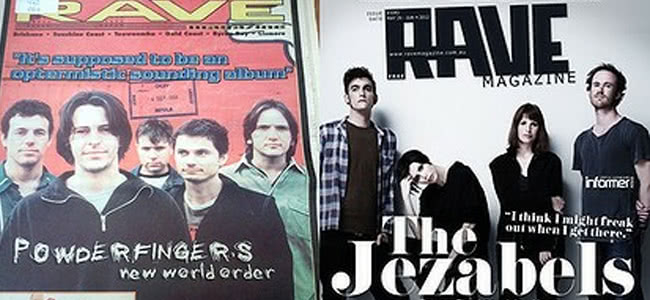Yesterday we reported that Brisbane’s street press, Rave Magazine, one of the state’s most popular – was ceasing operations effective immediately after publishing nearly 1050 issues across 21 years.
Rave‘s publisher, Colin Rankin, released a press statement announcing that the weekly paper would be folding, “Rave Magazine has now ceased publication of the weekly print edition of its magazines,” further noting that Rave‘s future, and in what format it may continue, was still undecided.
Rave’s demise casts a dark cloud over the future of the National Street Press network – who is responsible for similar publications across all of Australia’s major capital cities – specifically Melbourne’s Beat, Sydney’s Brag, Perth’s X-Press and Adelaide’s dB.
Today The Age, who are currently suffering their own print media fallout with Fairfax Media, have followed up on the closure of Brisbane’s Rave Magazine by speaking to Howard Duggan, publisher for Scene magazine; another of the Gold Coast’s street press publications.
“It is a sad but inevitable day,” remarked Duggan, “It has been clear for quite a few years that the writing has been on the walls for print and it is simply a matter of time when all the titles are gone and the order that they disappear is of no consequence.”
Duggan is the director of Scene‘s parent business Eyeball Media, and spoke to The Age about the print media’s future relying on shifting to online, while continuing to struggle for advertising exclusives in an over-saturated industry.
Eyeball Media has already begun its own shift to an online makret with the launch of an online portal for Scene Magazine, along with several partner websites. But Duggan noted that moving online wasn’t a clear path for the future of the publication, having to trade one set of competitors for another, in the form of social media like Facebook and internet juggernaut Google.
“Many online operations are not viable and which ones will be viable all remains to be seen,” was Duggan’s assessment, “this is the big problem, there is no school of thought to go to, there’s not 50 years worth of newspaper or television knowledge to draw upon… we’re all making this up as we go along,” he said.
Managing director for Street Press Australia, Mr. Craig Treweek, told The Age that were other factors at play for the industry.
“We’re totally different to paid for newspapers and paid-for publications – we’re free,” said Treweek, “we had no problems getting every copy picked up every week, no doubt about it, the readers love street press.” He instead indicated that political factors, such as the financial effects of the Queensland floods of 2011, also contributed to the problems in the advertising market. The same revenue stream that street press relies on to survive.
“When you look at Brisbane in isolation,” explained Treweek, “it has taken a long time for the city to recover from the floods and I think the government attitude and council attitudes to live music venues and nightclubs isn’t helping at all – they’re getting no support whatsoever.”
It doesn’t help matters when Rave, Scene and Brisbane’s Time Off were all competing for the same advertising revenue. Andrew Stafford, a former staffer for Time Off in the 1990s and an academic of the city’s live music scene, concurs that a city of Brisbane’s size was unable to support three free weekly papers.
“Brisbane has been really lucky to have such a diversity of coverage for so long, even if it was unsustainable,” says Stafford, “it’s a great reflection on the strength and enthusiasm of the local music scene, which, in other ways, is in the best shape I’ve ever seen it in the 20 years I’ve been covering it.” Despite his concerns and the current climate, he stated that his former employers at Time Off were “nowhere near folding… the fact of the matter is Time Off is part of a national group which obviously allows us to ride the bumps and waves of the various state economies on an annual basis,” he explained.

































